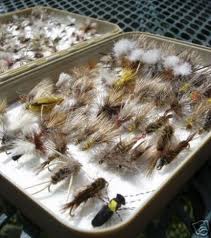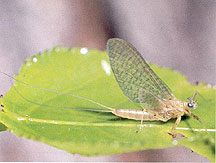 Chances are you’ve heard of the 80/20 rule, but it’s pretty unlikely that you’ve heard it in regard to choosing fly fishing fly patterns.
Chances are you’ve heard of the 80/20 rule, but it’s pretty unlikely that you’ve heard it in regard to choosing fly fishing fly patterns.
The 80/20 rule simply states that 80% of your results will come from 20% of your efforts. When choosing a fly pattern, this remains true. While you can spend hours trying to “match the hatch” perfectly, down to the last detail, I find it more productive to focus on the patterns that will produce the most results.
Sure, I enjoy catching a few bugs and finding, or tying, a pattern that mimics it as close as possible, but I don’t always have time for that. Sometimes, I have to get out there, catch some fish, then get back to the real world. I want to get the most out of my short trips, and that is what this post is about.
Today, we are going to focus on the mayfly, as they tend to produce the most excitement while on the water, especially if you get into a great hatch!
Mayfly Nymphs
Mayflies begin life as an egg, and hatch into an aquatic known as a nymph. Depending on the species of mayfly, the nymph stage can last from a few months, to two years.
There are several sophisticated fly patterns out there to imitate all of the different nuances of the different species of mayfly nymphs, but what we are trying to do is find the ones that will be most effective, most of the time.
For the most part, any good Pheasant tail nymph in sizes 8-18 will do the trick. Also be sure to have some Copper John’s, and Hare’s Ear Nymphs with you when you head to the river for some “nymphing.” I have found myself, and have many others that agree with me, that these three patterns in various sizes will catch fish most of the time.
Mayfly Duns
Most trout fisherman agree that fishing duns is some of the most fun you can have. The dun stage occurs when a nymph is going through metamorphosis, and splits it’s shuck. It will have upright wings, and look like a miniature sail boat.
What you are looking for in a fly fishing fly patter for this little guy is a solid imitation of the wings and the tails. My favorite is a Parachute Adams.
Also take a look at Harrop’s Hair-wing dun, as I have had a lot of success on this one as well. Either way, watching a trout rise to your fly when you are on a dun hatch is magical.
Mayfly Spinners
After the dun stage, mayflies head for the riverside vegetation. They will molt, and finally reach adulthood next to the river. This is where things get really fun!
After they get the molt taken care of, and usually within 18-24 hours, they head back to the water, and gather above it in huge mating swarms. After they mate, they fall down dead on the water, and the trout rise to eat them. This is great because the dead spinner isn’t going anywhere. They aren’t going to be able to escape, due to death and all, and the trout know this.
Two important differences between the spinner stage, and the dun stage. Spinners have darker wings, and longer tails. When they hit the water, their wings typically lie flush to the surface, as opposed to the straight up version of the duns.
Here’s where it gets really cool. If you liked the Parachute Adams for the dun, it can also work really well for the spinners! I also enjoy using the Deerstalker, and Spent Gnat in these conditions.
More Fishing, Less Tying
I want you to spend more of your time on the water fishing for trout, not switching flies. This is especially true if you are limited in the amount of time you can spend. Give these patterns a try, and let us know what your favorites are in the comments!
See ya on the water…
